By Dan Weisz
Here is an assortment of photos taken near the end of 2020. Enjoy!!
This female Gambel’s Quail was on an exterior wall of the Mission Garden at the base of A-Mountain near downtown. The Catalinas are behind her.
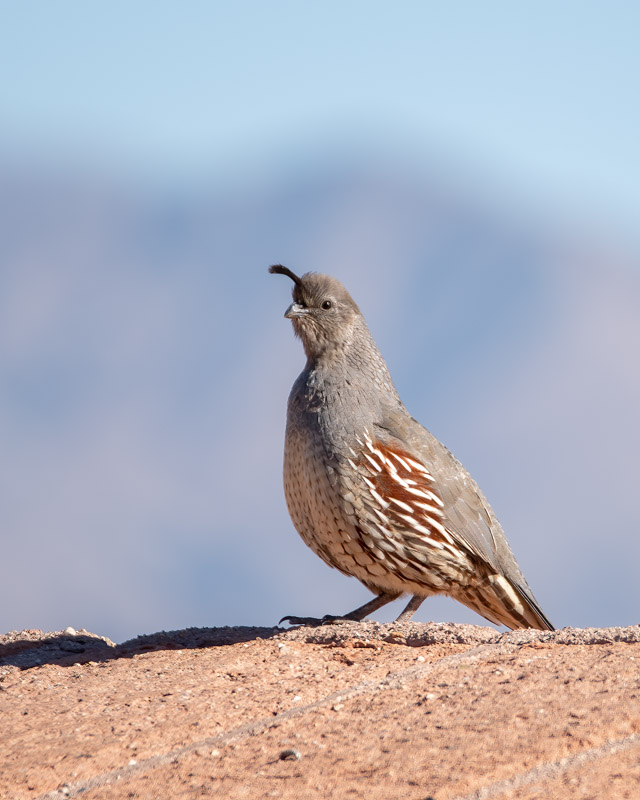
In Tubac along Bridge Road, a Turkey Vulture was doing what hungry Turkey Vultures do- eating at the Roadside Diner! Turkey Vultures are scavengers feeding almost exclusively on carrion. The scientific name for Turkey Vulture is Cathartes aura. The family name Cathartes comes from the Latin for “purifier (cathartic)”. These are not buzzards which are an Old World species. They are birds of the Americas whose common name comes from their resemblance to Turkeys with their red head and large dark plumage. The name “vulture” is derived from the Latin word vulturus, meaning “tearer” and is a reference to its feeding habits.
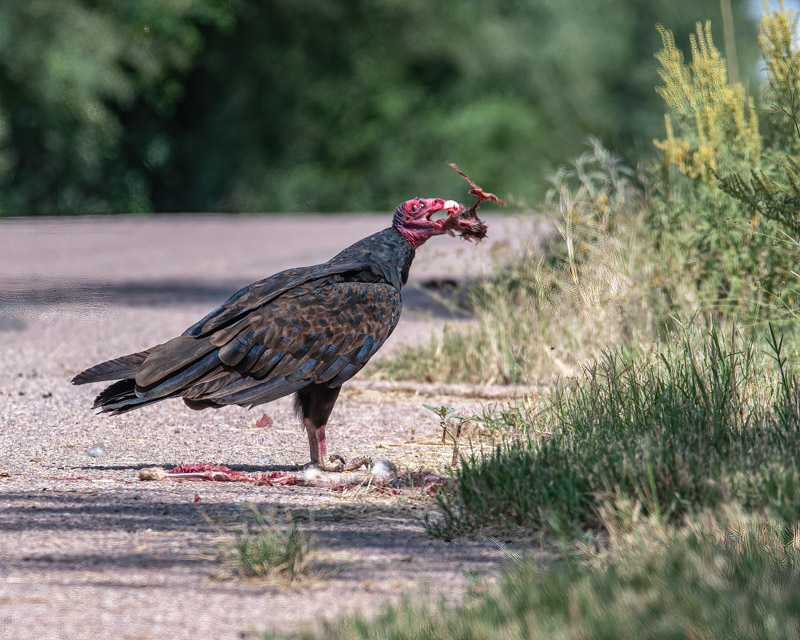
This is a female hummingbird, and I believe it is a Costa’s. I like the look of her eye hidden by the veil created by her rapidly moving wing feathers. I saw her at the Sewailo Golf Course.
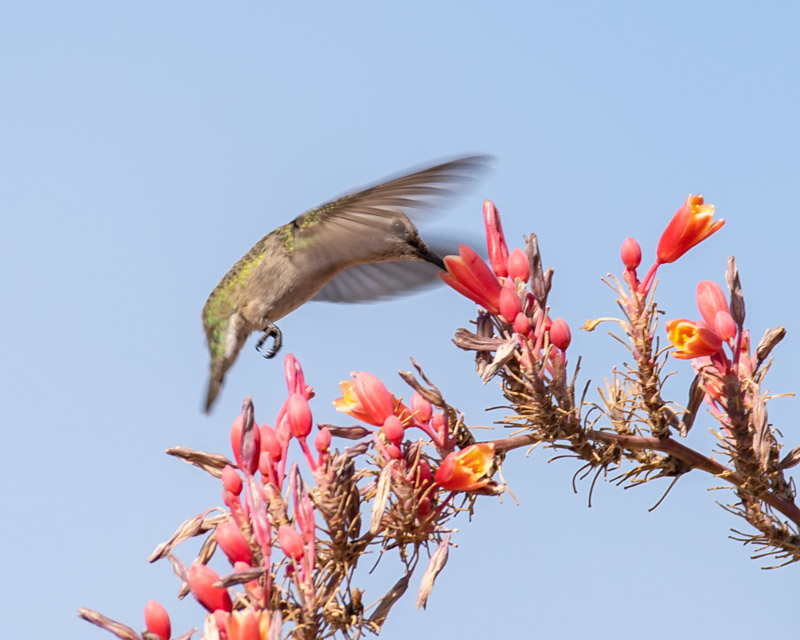
At Fort Lowell Park, the largest group of ducks currently are all American Wigeons. The white crown that the males have earned these ducks the nickname of “baldpate”. Wigeons make a distinctive rubber ducky sound as Birdnote highlights https://www.birdnote.org/listen/shows/american-wigeon
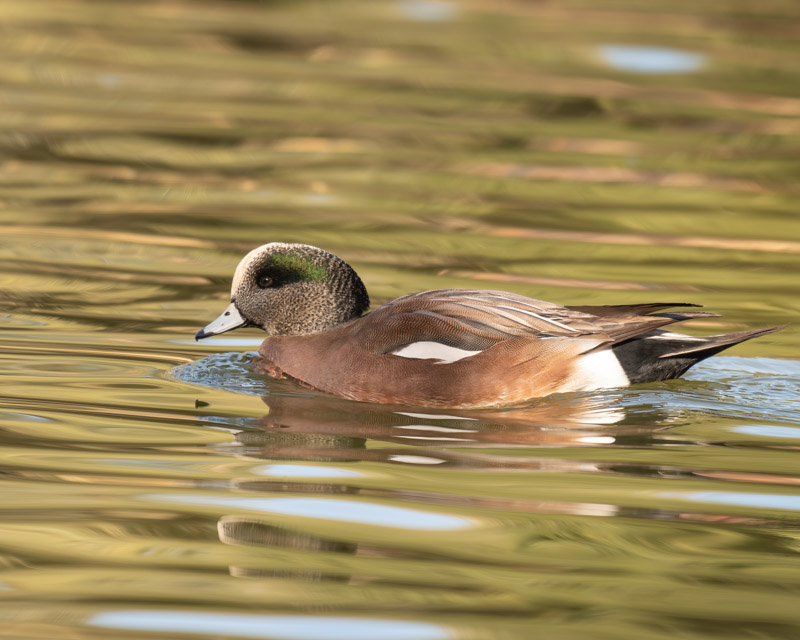
The female Wigeon has a brownish head that lacks the green stripe of the male’s. Her pale beak is also tipped in black.
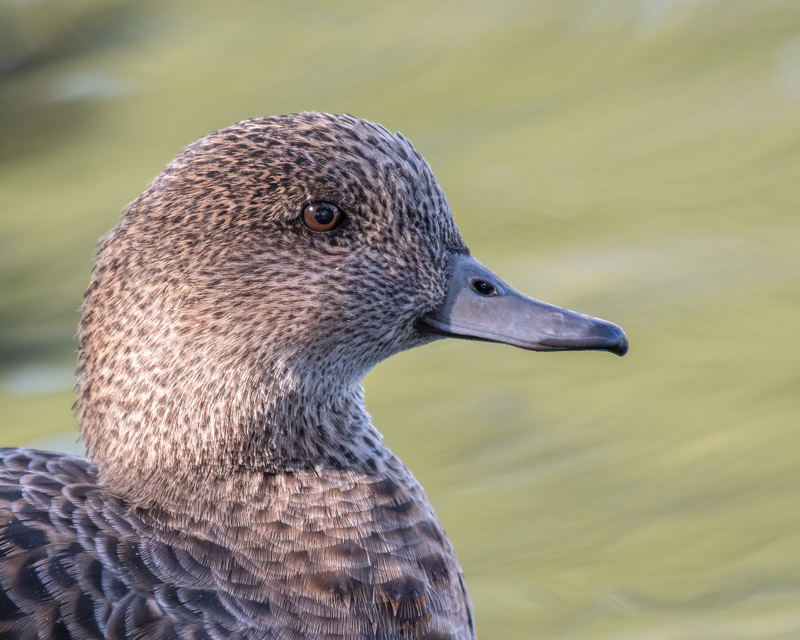
Another bird common at ponds is the Pied-billed Grebe. At this time of year, the grebe’s bill is only a light color, but during breeding season it turns silver with a thick black stripe running down in the middle of the beak, giving it that two-toned “pied” look. Although Pied-billed Grebes are waterbirds who look somewhat similar to ducks, they are no relation to ducks. DNA tests have shown that grebes are most closely related to Flamingos!
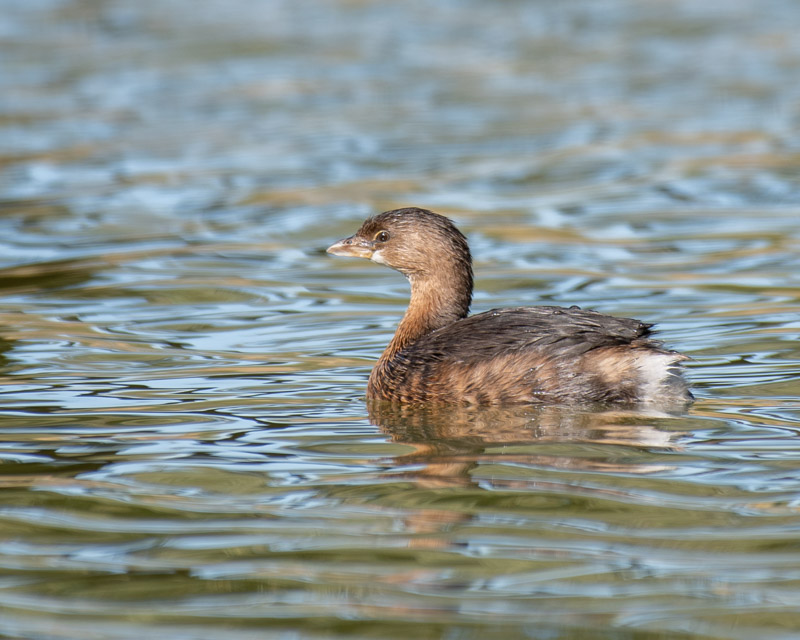
Chipping Sparrows are common across the United States but we see them in the desert valley only during winter. Their small size, gray breast and dark lore (the space between their beak and their eye) set them apart from other sparrows at this time of year. They feed on seeds, foraging on the ground often in large flocks during the winter.
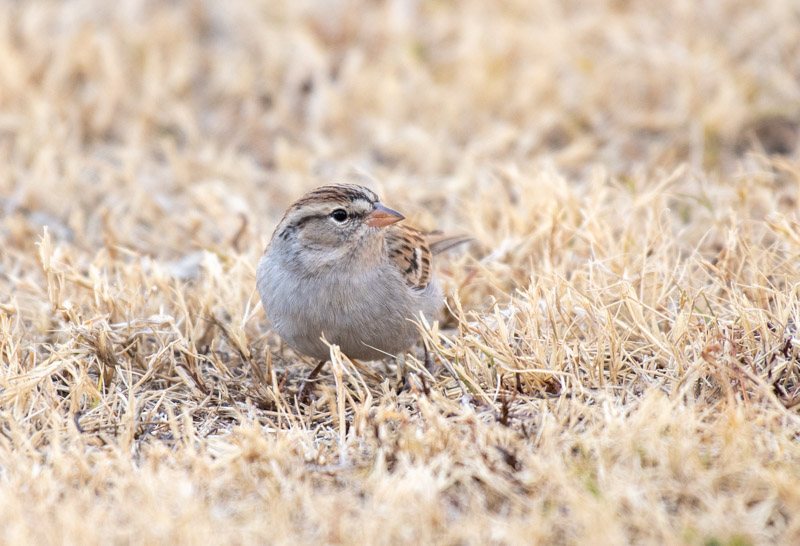
Near Fort Lowell Park, I saw a female Belted Kingfisher. Unlike most bird species, the female Belted Kingfisher is ‘prettier’ than the male. She will wear that rusty belt that a male will not have. We see Belted Kingfishers during the winter in Southern AZ.
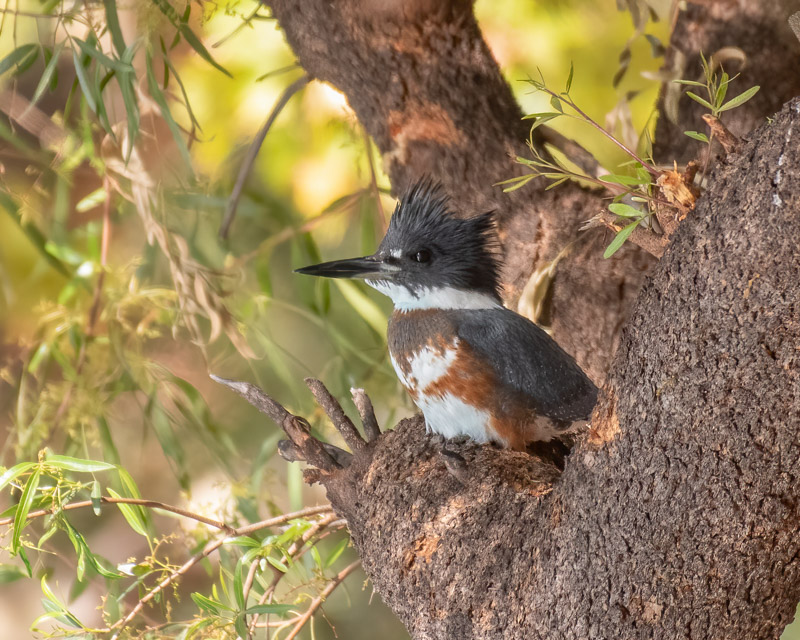
These stocky, top-heavy birds have a distinctive look and they perch in the open near bodies of water. Their diet is mostly fish. They will either spot the fish from their perch, or they may hover over the water, and then they will dive quickly into the water to grab their prey. Although they perch in the open and hunt over open water, it is usually their sound we hear before we see them.
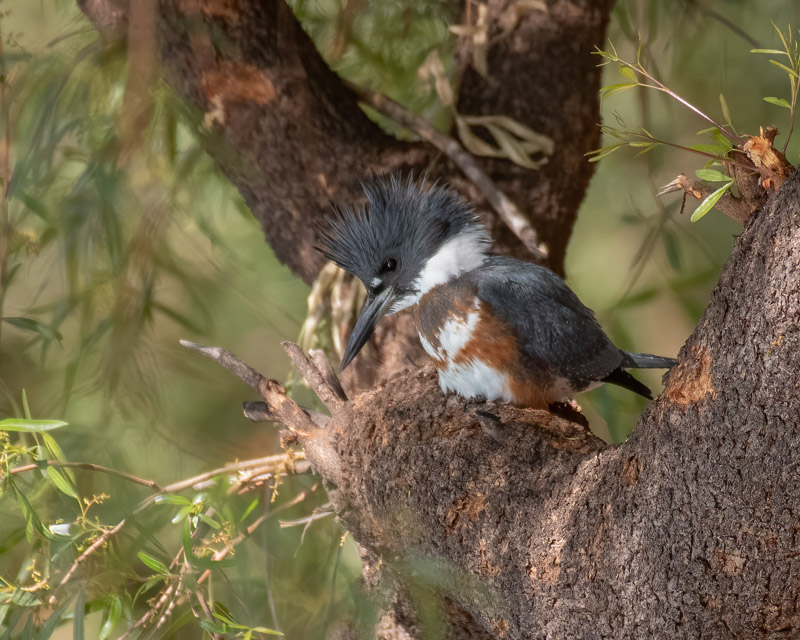
Belted Kingfishers can be heard in this Birdnote story. Birdnote also discusses the Kingfisher’s breeding behavior which we don’t witness that in southern AZ as we only have the birds here during wintertime: https://www.birdnote.org/listen/shows/burrowing-belted-kingfisher
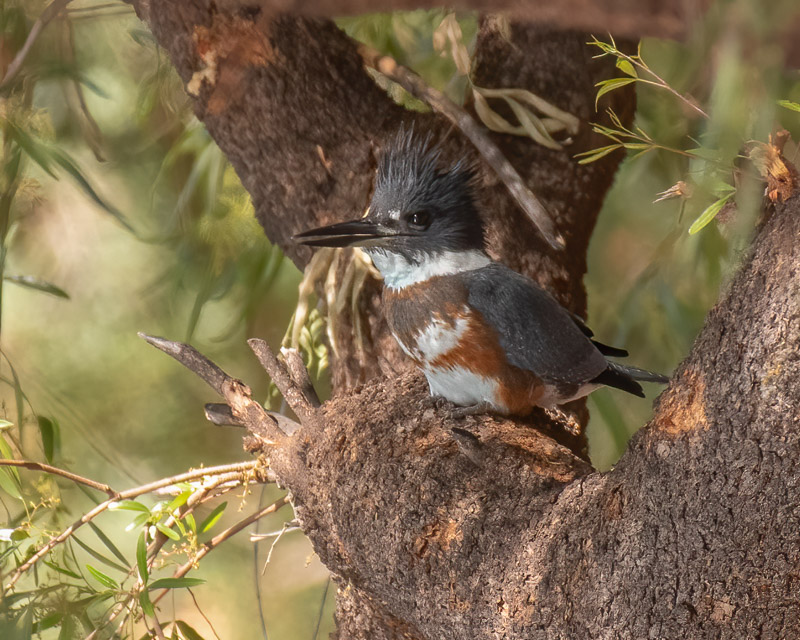
I hope you enjoyed this collection as much as I did.
